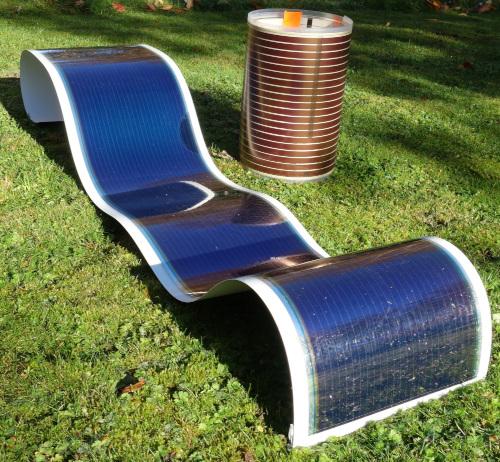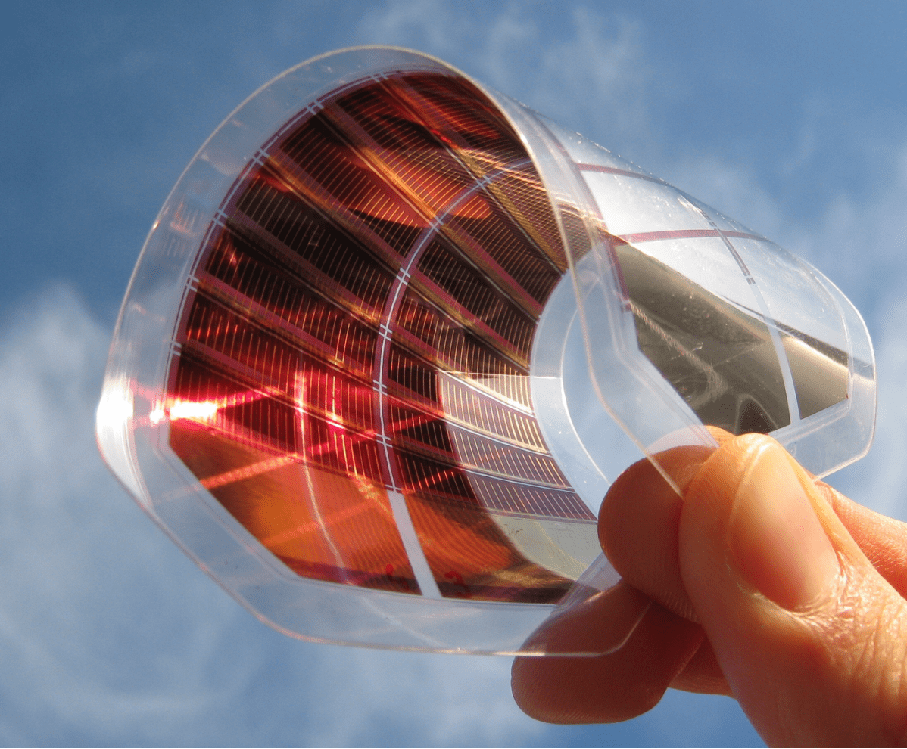"Organic Photovoltaic (OPV) Solar Cells with Morphological and Mechanical Robustness and Improved Chemical & Light Stability"
About Us
Kinmen OPV Pioneers have developed all-polymer non-fullerene flexible, semi-transparent OPV solar cells, which consist of a polymer donor and acceptor placed between the interfacial layers of the OPV. The organic photovoltaic cells (OPVs) developed will fulfill the requirements of low cost, high efficiency and prolonged lifetime with advantages such as lightweight, semi transparency, and mechanical flexibility. Also, low manufacturing temperatures and solution-process technology make OPV printable on flexible plastic substrates employing industrial rotating equipment or roll-to-roll (R2R). OPVs offered by the company are quite relevant and cost-effective technology, making them easy to deploy and use in innovative ways, such as integrating into buildings and windows, used in architectural design, wearable applications, etc.




Problems To Solve
Low Mechanical Stability & Efficiency of OPVs
PV panels are the most widely adopted method for harvesting solar energy, but inorganic PV panels aren’t flexible in terms of their design, making aesthetics a challenge. Unlike rigid silicon, OPVs have carbon-based compounds as their semiconductor.
Environmental Impact
Although PV systems produce little pollution while they are in use, it is impossible to disregard the potential environmental effects of such systems from manufacturing to disposal. Important environmental factors to consider include the creation of hazardous contaminants, the contamination of water resources, the emissions of air pollutants, and the effect of PV installations on land use.
Fullerene Limitations in All-Polymer Solar Cells
Fullerene is quite expensive and is a poor polymer-polymer combination which increases acceptor-donor separation resulting in the inefficient performance of OPVs. Almost all OPV panels use fullerene as an electron acceptor, which leads to weak absorption properties, high cost of fullerene compounds, multiple chemical synthesis steps and photosensitivity & oxygen-induced degradation.
Our Solution
-
We have used water-borne inks, i.e., donor and acceptor material, with the capability to impart a notable thermal insulation effect if used as BIPV in buildings.
-
Minimized the level of phase separation for the active layer of the OPV solar cells.
-
Increased stability, efficiency, and flexibility.
-
Controlled nanoscale morphology.



Advantages
All-Polymer and
Non-Fullerene Technology
Morphological and
Mechanical Robustness
Excellent Bending
Resistance
Greater Compatibility with Large-Scale Manufacturing
Improved Chemical
and Light Stability
Low Capital
Investment
Reduced Cost of
Raw Materials
Environmentally
Friendly
Testimonials
Meet The Team
Shuo-Wei Liang
Chief Executive Officer
Shuo-Wei Liang is a Director with over 19 years of managerial experience bringing up new technology and transforming R&D programs into products. He has worked as an Engineer, Manager, Project Leader, R&D Manager, Senior R&D Manager, Senior Marketing Manager and Manager of Technical Engineering Program Management (EPM). As the Chief Executive Officer of Kinmen OPV Pioneers, he will utilize his prior experience to satisfy both short- and long-term company objectives and capitalize on any new business opportunities. His extensive leadership skills ensure the success of the company in the Canadian market.
Chun-Hung Lee
Chief Marketing Officer
Chun-Hung Lee is a driven and accomplished businessman and consultant with 25 years of experience in the OEM/ODM/EMS electronic industries. He has worked as a Marketing Manager, Product Marketing Head, Manager, Special Assistant to the General Manager/Director of Sales & Marketing, Senior Director, Vice President and Consultant. As the Chief Marketing Officer of Kinmen OPV Pioneers, Mr. Lee will actively contribute to marketing effectiveness by identifying short-term and long-range issues by providing information, managing the company’s overall resources and operations, and recommending options that will be vital for Kinmen OPV Pioneers’ ability to thrive in Canada.
Tai-Wei Lin
Chief Operations Officer
Tai-Wei Lin is a well-established Director in the field of Industrial Design, with 17 years of experience. He has worked as an Industrial Designer, Special Assistant and Director. As the Chief Operations Officer of Kinmen OPV Pioneers, Mr. Tai-Wei Lin’s ability to optimize the company’s operating capabilities and his extensive years of experience will ensure that Kinmen OPV Pioneers continues to expand and surpass its short-and long-term KPIs in the Canadian market.
Hung-Ji Lin
Chief Technology Officer
Hung-Ji Lin is an accomplished Deputy Technical Manager with more than 14 years of experience. As the Chief Technology Officer of Kinmen OPV Pioneers, Mr. Hung-Ji Lin builds workflow and processes to ensure the success of teamwork and use the shortest path to achieve the target, making him a strong asset for Kinmen OPV Pioneers and ensuring the company’s tech advantage in the Canadian market.
Ching-Hao Yu
Chief Engineering Officer
Ching-Hao Yu is an accomplished science and engineering student. As the Chief Engineering Officer of Kinmen OPV Pioneers, Mr. Ching-Hao Yu will be responsible for the entire engineering department, from approving project designs to assigning engineers and technicians to ensure that all safety and structural standards are met throughout the completion of each project, which will significantly benefit Kinmen OPV Pioneers as it seeks to expand its growth in Canada.

Blogs
In the quest for sustainable energy solutions, organic photovoltaics (OPVs) have emerged as a promising alternative to traditional silicon solar cells.
As the world grapples with the consequences of climate change, the urgency for sustainable energy solutions has never been more pressing.
Organic Solar Cells (OSCs) stand out in the renewable energy landscape with their promise of affordability, lightweight design, and flexible manufacturing.
Solar energy is undeniably the future, and photovoltaic (PV) panels stand at the forefront of harnessing this boundless resource.
Solar energy has undoubtedly become a beacon of hope in our quest for sustainable power sources, with photovoltaic (PV) panels leading the way.
Breaking barriers in renewable energy, Kinmen OPV Pioneers unveils a groundbreaking approach to producing All-Polymer Non-Fullerene Flexible Semi-Transparent Organic Photovoltaic (OPV) Solar Cells!